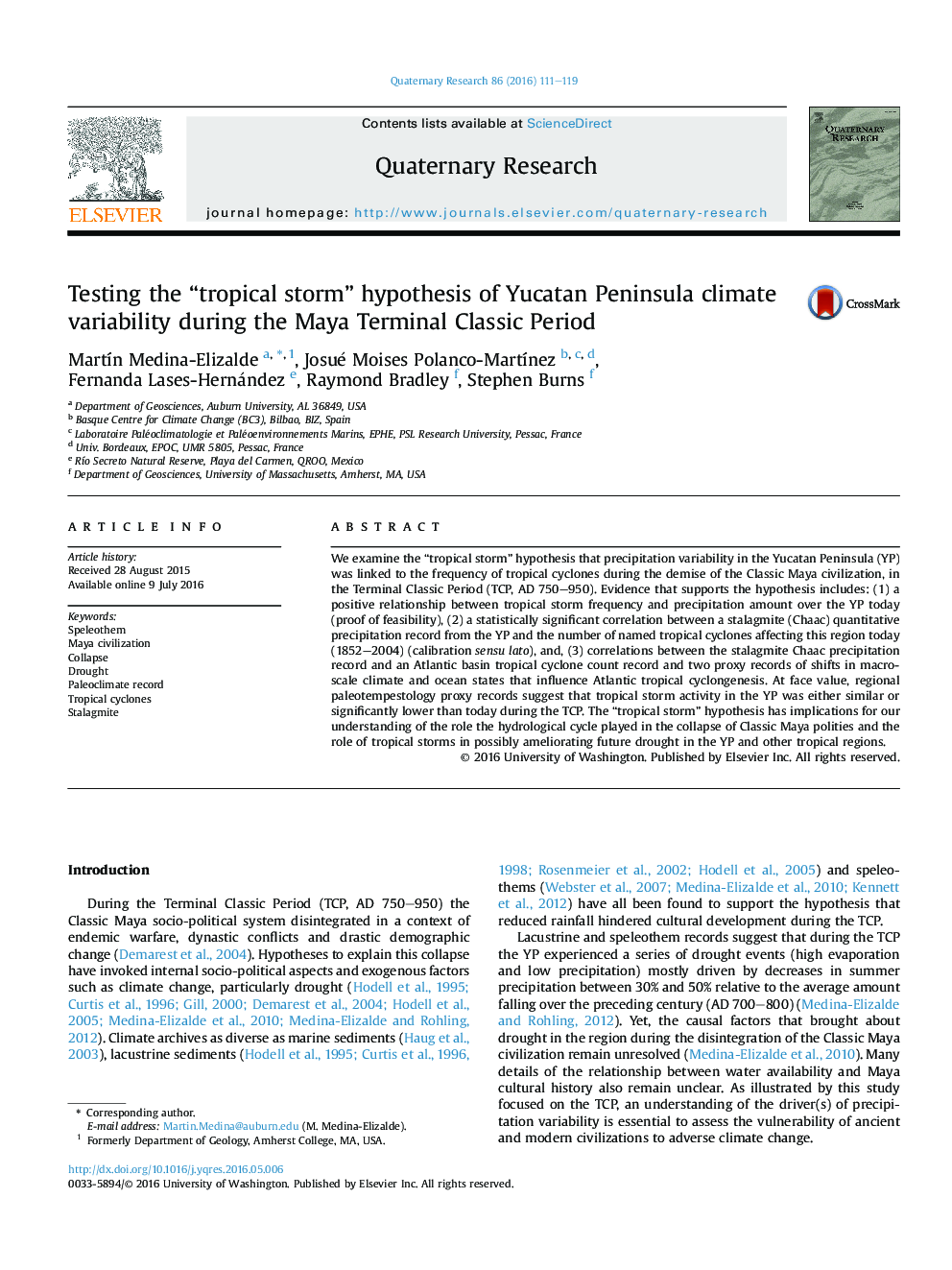| Article ID | Journal | Published Year | Pages | File Type |
|---|---|---|---|---|
| 5114228 | Quaternary Research | 2016 | 9 Pages |
Abstract
We examine the “tropical storm” hypothesis that precipitation variability in the Yucatan Peninsula (YP) was linked to the frequency of tropical cyclones during the demise of the Classic Maya civilization, in the Terminal Classic Period (TCP, AD 750-950). Evidence that supports the hypothesis includes: (1) a positive relationship between tropical storm frequency and precipitation amount over the YP today (proof of feasibility), (2) a statistically significant correlation between a stalagmite (Chaac) quantitative precipitation record from the YP and the number of named tropical cyclones affecting this region today (1852-2004) (calibration sensu lato), and, (3) correlations between the stalagmite Chaac precipitation record and an Atlantic basin tropical cyclone count record and two proxy records of shifts in macro-scale climate and ocean states that influence Atlantic tropical cyclongenesis. At face value, regional paleotempestology proxy records suggest that tropical storm activity in the YP was either similar or significantly lower than today during the TCP. The “tropical storm” hypothesis has implications for our understanding of the role the hydrological cycle played in the collapse of Classic Maya polities and the role of tropical storms in possibly ameliorating future drought in the YP and other tropical regions.
Related Topics
Physical Sciences and Engineering
Earth and Planetary Sciences
Geology
Authors
MartÃn Medina-Elizalde, Josué Moises Polanco-MartÃnez, Fernanda Lases-Hernández, Raymond Bradley, Stephen Burns,
